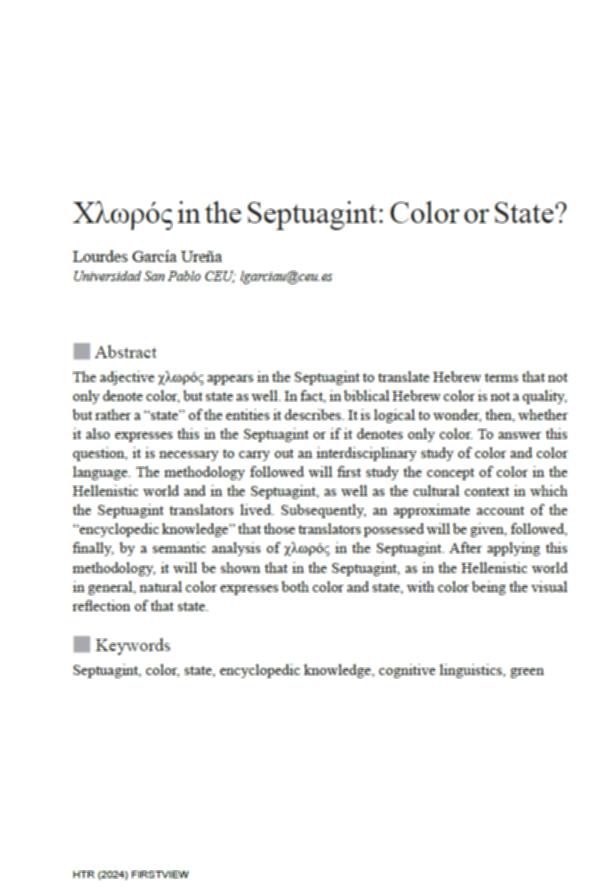Please use this identifier to cite or link to this item:
http://hdl.handle.net/10637/14820Χλωρός in the Septuagint: Color or State?

See/Open:
Septuagint_Garcia.PNG
65,47 kB
image/png
See/Open:
Χλωρός_Garcia_2024.JPG.pdf
Restricted Access
870,81 kB
Adobe PDF
Request a copy
| Title: | Χλωρός in the Septuagint: Color or State? |
| Authors : | García Ureña, Lourdes |
| Keywords: | Septuagint; Color; State; Encyclopedic; Knowledge; Cognitive; Linguistics; Green |
| Publisher: | Cambridge University Press |
| Citation: | García Ureña, Lourdes. "Χλωρός in the Septuagint: Color or State?" en Harvard Theological Review. 2024 |
| Abstract: | The adjective χλωρός appears in the Septuagint to translate Hebrew terms that not only denote color, but state as well. In fact, in biblical Hebrew color is not a quality, but rather a “state” of the entities it describes. It is logical to wonder, then, whether it also expresses this in the Septuagint or if it denotes only color. To answer this question, it is necessary to carry out an interdisciplinary study of color and color language. The methodology followed will first study the concept of color in the Hellenistic world and in the Septuagint, as well as the cultural context in which the Septuagint translators lived. Subsequently, an approximate account of the “encyclopedic knowledge” that those translators possessed will be given, followed, finally, by a semantic analysis of χλωρός in the Septuagint. After applying this methodology, it will be shown that in the Septuagint, as in the Hellenistic world in general, natural color expresses both color and state, with color being the visual reflection of that state. |
| URI: | http://hdl.handle.net/10637/14820 |
| Rights : | http://creativecommons.org/licenses/by-nc-nd/4.0/deed.es |
| Issue Date: | 11-Jan-2024 |
| Center : | Universidad San Pablo-CEU |
| Appears in Collections: | Facultad de Humanidades y CC de la Comunicación |
Items in DSpace are protected by copyright, with all rights reserved, unless otherwise indicated.

